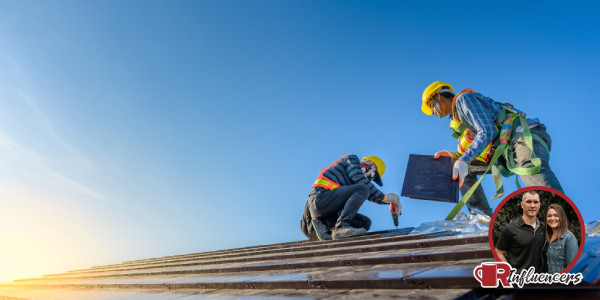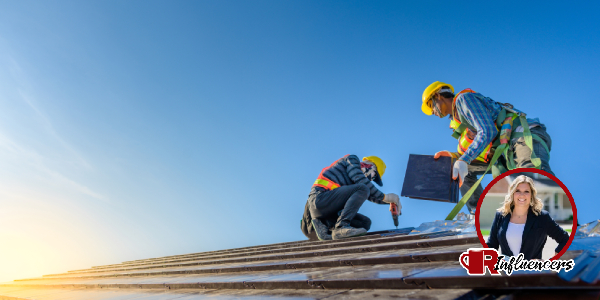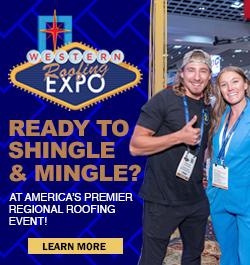How a good subcontractor is crucial to a successful project

RCS Influencer Trent Cotney says a subcontractor's ability to demonstrate responsibility for their own safety is key to a successful project.
Editor's note: The following is a transcript of a conversation between Megan Ellsworth, our multimedia manager, and Trent Cotney, partner of Adams and Reese. You can listen to the interview or read the transcript below.
Megan Ellsworth: Hello everyone. My name is Megan Ellsworth here@rooferscoffeeshop.com, and I am back again with my friend Trent Cotney, for an influencer response for February, 2024. Hi, Trent.
Trent Cotney: Hey, good to see you again.
Megan Ellsworth: Good to see you too. Um, okay, so this month's topic is all about subcontractor safety. So important. The question is, what steps do you take to ensure your subcontractor's work and safety is aligned with your company to avoid risk?
Trent Cotney: Yeah, so complex question, right, because you have to factor in the desire for safety, but you also have to think about risk mitigation as it relates to, um, OSHA liability. Uh, OSHA often looks to see who the controlling contractor is on a job site. So if you are a prime roofing contractor and you sub out a hundred percent of your labor, you may be held liable for your subs, uh, bad acts. Um, if you can't demonstrate that the sub is responsible for their own safety, so you can do that through a subcontract, you can do that on the, you know, at, at the job site. And I think that the key thing to do is you encourage safety through a top down approach. So if your quality control person or superintendent, or whoever it is that you have monitoring, you know, the subcontractor's progress identifies a safety violation, you go to the, that crew leader or the head of that subcontractor and you say, Hey, you're in breach of the contract.
It's your responsibility to ensure there's safety, you know, get this corrected immediately, stand down, you know, you may be subject to a back charge or whatever it might be, right? That's different than if you go on and actually you're physically putting harnesses on, you know, your, the crew of the sub also recommend that you don't, you know, have your safety gear on sub crews, meaning that your name isn't on that. I know it's good for marketing purposes, but from a liability perspective, you're basically owning it at that point. There are ways that you can provide PPE to, to subs. So if they don't have their own PPE, you can do, you know, a lease agreement. You can set up a separate account with your, you know, supplier distributor to, to get it done that way. Uh, and you can, you know, potentially do a back charge or set off or something like that. But, you know, to keep, that's better than just giving them say, Hey, here's our equipment. You, you know, use our equipment while you're on the job. So there are ways that you can ensure safety, uh, but again, you wanna really focus on doing that top down rather than, you know, ground up.
Megan Ellsworth: Yeah, that's really interesting. And I hadn't, I had never put thought into the fact that maybe you don't want your branding on your subcontractor crews. Um, that is, I hope everyone is taking notes for this one. That was a very key point. Anything else, any other tips, um, or wisdom pieces of advice for this month's question for everyone listening?
Trent Cotney: Yeah, you know, you always hear me talk about, you know, um, backfilling stuff, administratively, you want a good subcontractor checklist so that when you're onboarding subs, you're making sure you get, you know, evidence that they've got workers' comp, that they've got commercial general liability, that they've signed, the master subcontract agreement that, you know, get a copy of their safety manual. Do they have a safety program? If they don't, then you know what you're getting into, right? And, um, you know, depending on where our listeners are, are listening to this, you know, there are some areas that are highly, highly regulated like Florida and California and other places that are more wide open. So you have to adjust your, your subcontractor checklist depending on what's important in your area, but have those onboarding procedures and protocols in place because it's gonna allow you to vet your subs and make sure that you're checking the boxes before there's problems.
Megan Ellsworth: Well said. Awesome. Well, Trent, as usual, amazing job. Thank you for your wisdom and your pieces of advice. I hope again, everyone out there, um, enjoyed this month's influencer response from Trent Cotney. And we'll be chatting next month.
Trent Cotney: Sounds good. Thank you.
Megan Ellsworth: Awesome. Thanks Trent.
Trent Cotney is a partner and Construction Practice Group Leader at the law firm of Adams and Reese LLP and NRCA General Counsel. See his full bio here.
The information contained in this article is for general educational information only. This information does not constitute legal advice, is not intended to constitute legal advice, nor should it be relied upon as legal advice for your specific factual pattern or situation.




-2025-xtv-mls-tour-2.png)
















Comments
Leave a Reply
Have an account? Login to leave a comment!
Sign In